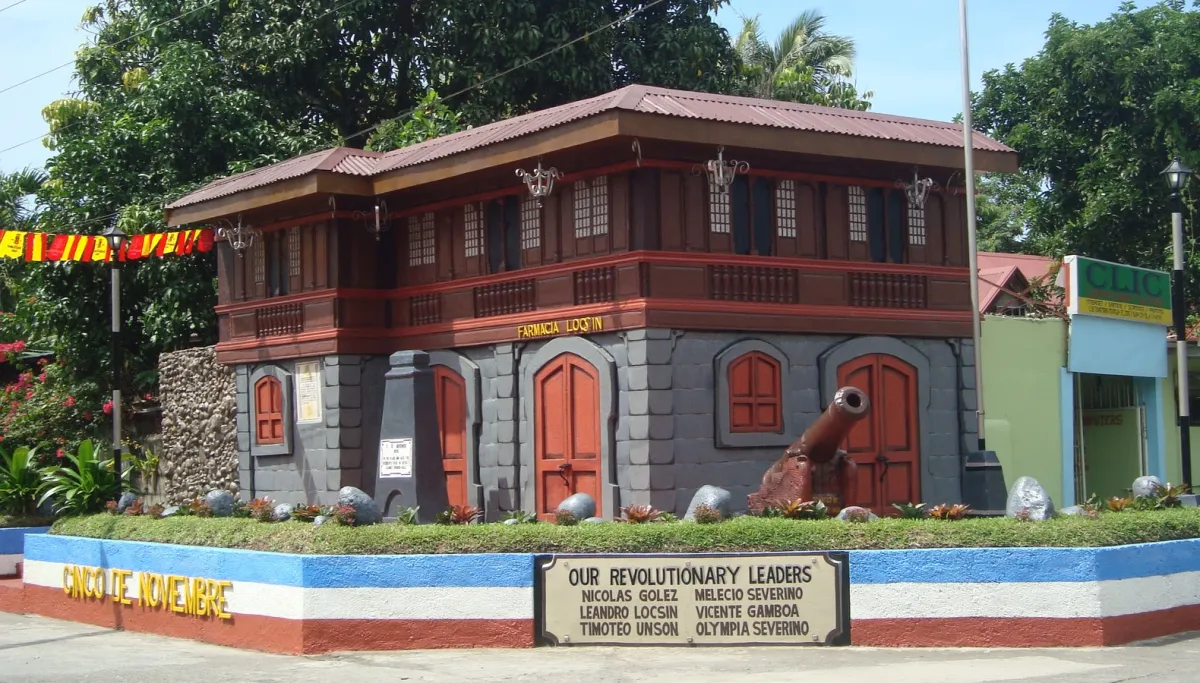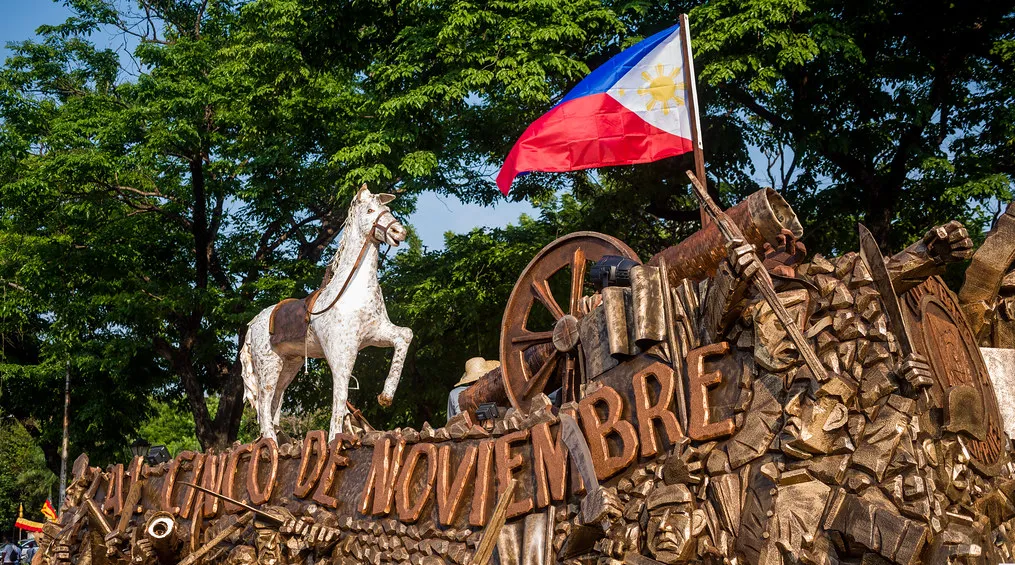⭕ SMART: 098 5973 7798 ⭕ GLOBE: 091 5874 9128 ⭕LANDLINE: 034 466 4554
Cinco De Noviembre Review
In the annals of Philippine history, the Cinco De Noviembre uprising, also known as Negros Day or Negros Revolution, stands as a testament to the spirit and resilience of the Filipino people. While often overshadowed by other historical events, this uprising played a pivotal role in the struggle for Philippine independence. This lesson aims to shed light on the often-overlooked Cinco De Noviembre, examining its historical context, key figures, significant events, and enduring legacy.
Table of Contents
I. Historical Context: The Late 19th Century Philippines
The late 19th century was a turbulent period in Philippine history. The archipelago had been under Spanish colonial rule for over three centuries, leading to economic exploitation, cultural suppression, and political subjugation. This era was marked by the emergence of Filipino nationalism, inspired by the writings of José Rizal and the revolutionary zeal of Andrés Bonifacio. Filipinos yearned for freedom, equality, and self-determination.
II. Negros Occidental: The Hacienda System and Exploitation
To understand Cinco De Noviembre, one must delve into the specific context of Negros Occidental. This province was primarily known for its vast sugarcane plantations, which fueled the wealth of Spanish landowners. These landowners, often absentee landlords, controlled extensive haciendas and profited immensely from the labor of Filipino sacadas—peasants and farmworkers subjected to grueling working conditions, low wages, and a life of poverty. The disparity between the wealthy landowners and impoverished sacadas was stark and unbearable.
Celebrating Cinco De Noviembre: Honoring Philippine Independence and Resilience
Cinco De Noviembre, also known as Negros Day or Negros Revolution, is a significant but often overlooked event in Philippine history. This uprising, which occurred on November 5th, 1898, holds a special place in the hearts of Filipinos, as it symbolizes the enduring spirit of independence and resilience against oppression. In this essay, we will explore how to celebrate Cinco De Noviembre in the Philippines, emphasizing the historical significance, cultural traditions, and the importance of passing on this rich heritage to future generations.
Chapter 1: Understanding the Significance of Cinco De Noviembre
Before delving into the ways to celebrate Cinco De Noviembre, it is essential to understand its historical significance. This uprising took place in Negros Occidental, a province characterized by vast sugarcane plantations and a deeply entrenched hacienda system. Filipino laborers, known as sacadas, endured harsh working conditions and economic exploitation. Cinco De Noviembre marked a rebellion against Spanish colonial rule and the oppressive hacienda system, ultimately contributing to the broader struggle for Philippine independence.
Chapter 2: Commemorative Ceremonies and Events
One of the most common ways to celebrate Cinco De Noviembre is through commemorative ceremonies and events. These gatherings provide an opportunity for Filipinos to reflect on their history, pay tribute to their ancestors' sacrifices, and foster a sense of unity and national pride.
• Flag Raising Ceremony: A central event in Cinco De Noviembre celebrations is the flag raising ceremony. The Philippines flag is hoisted as a symbol of freedom and independence. Local government officials, community leaders, and residents often participate, reaffirming their commitment to the ideals of the revolution.
• Wreath-Laying Ceremony: Another significant part of the commemoration involves laying wreaths at monuments or historical markers dedicated to the heroes and leaders of the uprising. This solemn act pays homage to those who fought for freedom and serves as a reminder of their sacrifices.
• Parades and Marches: Many communities organize parades and marches, featuring participants dressed in period costumes to reenact the events of Cinco De Noviembre. These lively processions serve as a visual representation of the historical struggle and draw both locals and tourists.
• Cultural Performances: Cultural performances, including traditional dances, music, and theatrical reenactments, play a vital role in Cinco De Noviembre celebrations. These artistic expressions help educate younger generations about their history while entertaining attendees.
Chapter 3: Educational Programs and Exhibits
Education is a fundamental aspect of celebrating Cinco De Noviembre. Various programs and exhibits are designed to inform the public, especially the youth, about the historical significance of the uprising and its relevance to contemporary Philippine society.
• Historical Lectures and Seminars: Local schools, universities, and historical societies often organize lectures and seminars that delve into the details of Cinco De Noviembre. Renowned historians and scholars may be invited to share their insights, providing a deeper understanding of the events leading to the revolution.
• Museum Exhibits: Museums frequently curate exhibits dedicated to Cinco De Noviembre, showcasing artifacts, documents, and artwork related to the uprising. These exhibits offer a visual and immersive experience that connects visitors with their history.
• Book and Documentary Launches: Authors and filmmakers may release books and documentaries focused on Cinco De Noviembre. These resources serve as valuable educational tools, making the history accessible to a broader audience.
Chapter 4: Traditional Cuisine and Festivities
No celebration in the Philippines is complete without an array of delicious traditional dishes and lively festivities. Cinco De Noviembre provides an excellent opportunity to savor authentic Filipino cuisine and engage in cultural merrymaking.
• Food Festivals: Many towns and cities host food festivals featuring local delicacies and specialties. Traditional dishes like adobo, lechon, pancit, and kakanin are showcased, allowing attendees to indulge in flavors that have been passed down through generations.
• Parties: Street parties and fiestas are a common sight during Cinco De Noviembre celebrations. Communities come together for music, dancing, and games. It's a time for families and friends to bond while honoring their history.
• Traditional Performances: Cultural presentations, such as folk dances and musical performances, take center stage during festivities. These performances not only entertain but also preserve the cultural heritage of the Philippines.
Chapter 5: Community Service and Volunteerism
Celebrating Cinco De Noviembre goes beyond festive events and historical reflection. It's also an opportunity to give back to the community and uphold the values of unity and compassion.
• Community Clean-Up: Many communities organize clean-up drives and environmental initiatives as part of their Cinco De Noviembre celebrations. This reflects the spirit of revolution and the desire for positive change in society.
• Charity and Outreach Programs: Local organizations and volunteers may conduct charity and outreach programs, providing assistance to marginalized communities. These initiatives embody the revolutionary ideals of justice and equality.
Chapter 6: Promoting Cultural Heritage
Preserving cultural heritage is integral to celebrating Cinco De Noviembre. Efforts to promote and safeguard Filipino traditions, language, and customs play a crucial role in ensuring that the significance of the uprising is not forgotten.
• Language and History Workshops: Language and history workshops are conducted to teach younger generations about their heritage. Learning the local dialect, as well as Filipino and Negrense history, fosters a sense of identity and pride.
• Cultural Exchange Programs: Cultural exchange programs between different regions of the Philippines help people appreciate the diversity of their nation. These exchanges often involve music, dance, and culinary traditions.
Cinco De Noviembre, the often-overlooked revolution in the Philippines, deserves recognition and celebration. It embodies the spirit of independence, resilience, and unity that continue to define the Filipino people. Through commemorative events, educational programs, traditional festivities, community service, and cultural preservation efforts, Filipinos can honor their history, pass down their heritage to future generations, and ensure that the legacy of Cinco De Noviembre lives on.
"Cinco De Noviembre" (Spanish for "Fifth of November") refers to the annual celebration of the Cinco de Noviembre Revolution in the Philippines. This event commemorates a significant historical moment in the city of Silay, located in Negros Occidental, Philippines.
The Cinco de Noviembre Revolution took place on November 5, 1898. During this time, the Philippines was still under Spanish colonial rule, and the country was in the midst of seeking independence. The revolution in Silay marked a crucial chapter in the fight for Filipino independence.
On that day, the people of Silay, led by various revolutionary leaders, took up arms against Spanish forces in a bid for freedom and sovereignty. They successfully drove out the Spanish authorities and established a free government, declaring the independence of Negros Occidental from Spanish rule.
The Cinco de Noviembre celebration in Silay City includes various events and activities, such as parades, cultural performances, historical reenactments, and exhibits. It serves as a reminder of the courage and determination shown by the people of Silay in their struggle for freedom and the significant role they played in the Philippines' journey to independence.
The commemoration of Cinco de Noviembre is not only an opportunity to honor the historical significance of the revolution but also a chance for the people of Silay to showcase their pride in their city's heritage and the spirit of patriotism that shaped the nation's history. It is a day of remembrance and celebration, fostering a deeper appreciation for the sacrifices made by the forefathers in the quest for freedom and self-determination.

Why Do People Celebrate Cinco De Noviembre?
Historical Commemoration: It is a day of remembrance, commemorating the bravery and determination of the people of Silay who took up arms against Spanish forces on November 5, 1898, in their quest for freedom.
Patriotic Pride: The event fosters a sense of pride and patriotism among the people of Silay, as they celebrate their city's role in the Philippines' journey to independence.
Cultural Heritage: The celebration showcases Silay City's rich cultural heritage through parades, cultural performances, and historical reenactments, preserving and passing down traditions to future generations.
Historical Education: It provides an opportunity for education and awareness about the significance of the Cinco de Noviembre Revolution, ensuring that the younger generation understands the importance of their city's history in the broader context of Philippine independence.
Community Bonding: Cinco De Noviembre brings together the community, fostering a sense of unity and solidarity as people join together to commemorate their shared history and heritage.
Symbol of Freedom: The event stands as a symbol of freedom and independence, reminding the people of Silay of the sacrifices made by their ancestors to secure a better future for the nation.
Tourist Attraction: The celebration also attracts tourists and visitors who are interested in Philippine history and cultural festivities, contributing to the local economy and promoting Silay City as a historical and cultural destination.

What You Should Know About Cinco De Noviembre
"Hey, do you know what's the best thing about Cinco De Noviembre in Silay City? It's like a fiesta where the Filipinos decided to celebrate the victory of their ancestors by having the most epic, flaky battle of the pastries!
Picture this: on one side, you have the mighty Piaya warriors armed with layers of flaky pastry, stuffed with the sweetest muscovado sugar. They're ready to conquer taste buds and win hearts with their crunchy deliciousness! On the other side, we have the valiant Napoleones army, puff pastry warriors filled with luscious custard and glazed with sugar, marching to battle with their delectable creaminess!
The battlefield? The dining table, of course! Families and friends gather 'round, armed with forks and napkins, ready to devour these sweet treats in an epic pastry showdown. The Piaya versus the Napoleones, the battle of the century!
In the end, though, it's a tie! The warriors from both sides are too delicious to declare a clear winner. So, they decide to put their differences aside and join forces, creating the ultimate pastry alliance for everyone to enjoy.
And that, my friends, is how Cinco De Noviembre in Silay City became the tastiest and most hilarious celebration of all time! So, next time you're in Silay, make sure to join in the pastry feast and taste the legendary flavors that made history in the most scrumptious way possible!"
Remember, this is just a playful and fictional take on Cinco De Noviembre , mixing the historical significance of the event with a humorous twist centered around the delicious pastries that Silay City is famous for. Enjoy the festivities, and don't forget to indulge in some piaya and napoleones!
Cinco De Noviembre Summary
In the annals of Philippine history, the story of Cinco De Noviembre stands as a testament to the indomitable spirit of the Filipino people. This biography and narrative delve into the origins of Cinco De Noviembre, tracing its roots to the province of Negros Occidental, and illuminating the pivotal events that culminated in a remarkable uprising and a legacy of bravery and self-determination.
The Setting - Negros Occidental
Negros Occidental, located in the Western Visayas region of the Philippines, is known for its lush landscapes, fertile soil, and sugarcane plantations. In the 19th century, it was an idyllic province with vast expanses of sugarcane fields that promised great wealth to its landowners. However, beneath this tranquility lay a deeply rooted system of oppression.
The Spanish Colonial Era
During the Spanish colonial period, Negros Occidental was subjected to a system of land ownership and labor known as "haciendas." Spanish landowners, often absentee landlords, controlled vast estates worked by Filipino laborers, most of whom were peasants and farm workers. These laborers, or "sacadas," endured harsh working conditions, low wages, and a life of poverty.
The Spark of Discontent
The oppressive conditions on the haciendas eventually ignited the spark of discontent among the Filipino laborers. As they toiled under the scorching sun, the disparity between their impoverished lives and the opulence of the landowners became increasingly unbearable. This discontent simmered beneath the surface, waiting for the right moment to erupt.
The Influence of Nationalism
The late 19th century saw the rise of nationalism in the Philippines, fueled by the ideas of national independence and self-determination. Filipino intellectuals, inspired by the likes of José Rizal and Andrés Bonifacio, began to advocate for the end of Spanish colonial rule and the establishment of a free and sovereign nation.
The Cry for Reform
The cry for reform resonated not only in the urban centers of the Philippines but also in the rural regions like Negros Occidental. As the ideas of freedom and equality spread, they found fertile ground among the oppressed laborers who longed for a better life.
The Role of Local Leaders
In Negros Occidental, local leaders emerged as champions of the people's cause. Among them was Juan Araneta, a prominent landowner who sympathized with the plight of the sacadas. Araneta used his influence and resources to support the growing movement for change.
The Gathering Storm
By the late 19th century, the conditions in Negros Occidental were ripe for rebellion. The sacadas, inspired by the ideals of nationalism and driven by their desire for justice, began to organize themselves. They secretly met, discussed their grievances, and formulated plans for a coordinated uprising.
The Cinco De Noviembre Uprising
On the fateful morning of November 5, 1898, the people of Negros Occidental rose in rebellion against Spanish colonial rule. The uprising, now known as Cinco De Noviembre, was a coordinated effort by the sacadas, led by local leaders like Juan Araneta.
The rebels captured key towns and cities, including Bacolod, Silay, and Valladolid. They unfurled the Filipino flag and declared their independence from Spain, embodying the spirit of the Philippine Revolution. The rebellion marked a turning point in the struggle for freedom.
The Battle of Santa Clara
One of the most significant battles of the Cinco De Noviembre uprising was the Battle of Santa Clara, fought on November 6, 1898. Filipino rebels, armed with improvised weapons and fueled by their determination, faced off against Spanish forces. Despite being outnumbered and outgunned, the rebels displayed extraordinary courage and resilience. The battle raged on for hours until the Spanish forces finally surrendered. The victory at Santa Clara was a symbolic triumph of the people's will over colonial oppression.
The Quest for Independence
The success of the Cinco De Noviembre uprising sent shockwaves throughout Negros Occidental and beyond. It inspired other provinces to rise against Spanish rule. The momentum of the Philippine Revolution was building, and the dream of independence was within reach.
The Legacy of Cinco De Noviembre
Cinco De Noviembre left an indelible mark on the history of Negros Occidental and the Philippines as a whole. It demonstrated that the Filipino people, regardless of their social status, could unite to stand against oppression and fight for their rights.
The legacy of Cinco De Noviembre lives on in the hearts and minds of the people of Negros Occidental. It serves as a reminder of the power of unity, courage, and determination in the face of adversity.
The Road to Philippine Independence
The events of Cinco De Noviembre were part of a broader movement for Philippine independence. The uprising contributed to the eventual defeat of Spanish colonial forces and the establishment of the First Philippine Republic on June 12, 1898.
However, the struggle for independence did not end with the overthrow of Spanish rule. It continued with the Philippine-American War and subsequent challenges. Nevertheless, the spirit of Cinco De Noviembre remained alive in the hearts of Filipinos as they pursued their dream of self-determination.
A Legacy of Courage
Cinco De Noviembre stands as a testament to the enduring spirit of the Filipino people. It reminds us that the quest for justice, freedom, and equality transcends time and place. The uprising in Negros Occidental serves as a symbol of resilience and the indomitable human spirit in the face of adversity.
As the people of Negros Occidental and the Philippines commemorate Cinco De Noviembre each year, they pay tribute to the brave sacadas and local leaders who stood up against oppression. The legacy of this remarkable uprising continues to inspire future generations to pursue justice and fight for a better world.
Overall, the celebration of Cinco De Noviembre in Silay City is a cherished tradition that not only pays homage to the past but also inspires hope and unity for the future. It serves as a reminder of the importance of preserving cultural heritage and the collective responsibility to safeguard the hard-earned freedom and independence of the Filipino people.

